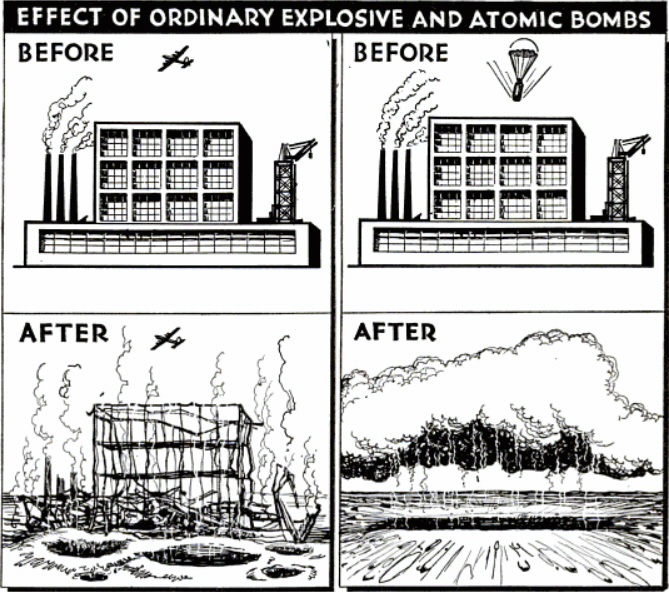


On August 6th, 1945, the American B-29 Superfortress Enola Gay dropped the atomic bomb Little Boy on Hiroshima, Japan. It was the second atomic weapon ever detonated, and the first used in actual war. A few weeks earlier, Manhattan Project researchers detonated the first atomic weapon in a remote New Mexico desert, but it was the bombings of Hiroshima and Nagasaki that ushered in the nuclear age with a blinding flash.
Right before the attack, in its August 1945 issue, Popular Science coincidentally published a piece by Major George Fielding Eliot arguing that drastic measures against Japan—i.e. large-scale poison gas attacks—were necessary to end the war.
Eliot wasn’t a serving member of the military at the time of publication. Instead, he was a retired officer, who worked as a naval correspondent and wrote science fiction, as well as military commentaries. He was famously wrong in 1938 when he wrote a piece titled “The Impossible War With Japan,” published at the American Mercury. (Not only did the piece declare such a war was impossible, but in it, Eliot specifically said “a Japanese attack upon Hawaii is a strategical impossibility.”)
In “Should We Gas?,” Eliot’s argument foreshadows one commonly used in defense of the atomic bombings, highlighting Japan’s perceived inability to see its own inevitable defeat, and the high casualties that come with land invasions. President Truman, who ordered the atomic bombings of Hiroshima and Nagasaki, echoed this when explaining his rationale in a letter to Professor James L. Cate. He wrote:
Obviously, gas was not the weapon of mass destruction used against Japan.
In the September 1945 issue of Popular Science, following the bombings of Hiroshima and Nagasaki, the editors published a statement titled “Annihilation Bomb: Friend or Foe?” It focuses heavily on the science of the weapon and the long term implications of using it, while curiously ignoring the considerable number of people who died (estimates near 200,000 dead and injured). “Annihilation Bomb” compares the power of the bombs to that of a star; it touches upon the effects of radiation, both through cancer treatments and as a harmful after-effect. There’s even a suggestion of deriving energy from nuclear power: “Popular Science‘s editors are confident, nevertheless, that scientists can learn to control this new source of power as they have controlled fire and electricity.” It ends, optimistically, with this:
Read “Annihilation Bomb” below:

